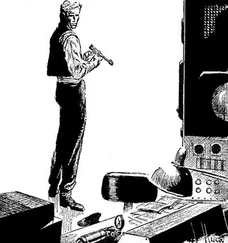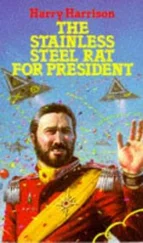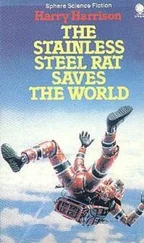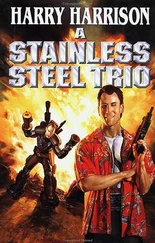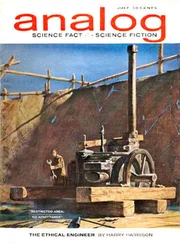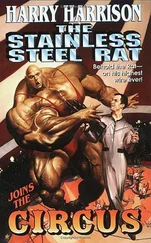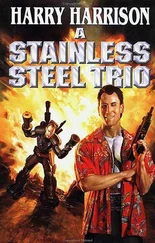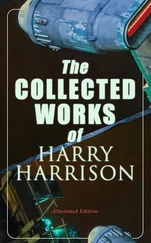Harry Harrison - The Turing Option
Здесь есть возможность читать онлайн «Harry Harrison - The Turing Option» весь текст электронной книги совершенно бесплатно (целиком полную версию без сокращений). В некоторых случаях можно слушать аудио, скачать через торрент в формате fb2 и присутствует краткое содержание. Год выпуска: 1992, ISBN: 1992, Издательство: Viking, Жанр: Фантастика и фэнтези, на английском языке. Описание произведения, (предисловие) а так же отзывы посетителей доступны на портале библиотеки ЛибКат.
- Название:The Turing Option
- Автор:
- Издательство:Viking
- Жанр:
- Год:1992
- ISBN:978-0-670-84528-6
- Рейтинг книги:3 / 5. Голосов: 1
-
Избранное:Добавить в избранное
- Отзывы:
-
Ваша оценка:
- 60
- 1
- 2
- 3
- 4
- 5
The Turing Option: краткое содержание, описание и аннотация
Предлагаем к чтению аннотацию, описание, краткое содержание или предисловие (зависит от того, что написал сам автор книги «The Turing Option»). Если вы не нашли необходимую информацию о книге — напишите в комментариях, мы постараемся отыскать её.
The Turing Option — читать онлайн бесплатно полную книгу (весь текст) целиком
Ниже представлен текст книги, разбитый по страницам. Система сохранения места последней прочитанной страницы, позволяет с удобством читать онлайн бесплатно книгу «The Turing Option», без необходимости каждый раз заново искать на чём Вы остановились. Поставьте закладку, и сможете в любой момент перейти на страницу, на которой закончили чтение.
Интервал:
Закладка:
12
October 27, 2023
“Feeling fine today, are we?” Dr. Snaresbrook asked as she opened the door, then stood aside as a nurse and an orderly rolled in the heavily laden trolleys.
“I was — until I saw that hardware and that double-ended broom with the bulging glass eyes. What is it?”
“It’s a commercially manufactured micromanipulator. Very few have been made.”
Snaresbrook kept smiling, gave Brian no hint that this was part of the machine that Brian had helped her develop. “At the heart of the machine is a parallel computer with octree architecture. This enables it to fit it on a single and rather large planar surface. Wafer-scale integration. This interfaces with a full computer in each joint of the tree-robot.”
“Each joint — you’re putting me on!”
“You’ll soon discover how much computers have changed — particularly the one that controls this actuating unit. The basic research was done at MIT and CMU to build those brooms, as you call them. It is a lot more complex than it looks at a distance. You will notice that it starts out with two arms — but they bifurcate very quickly. Each arm then becomes two—”
“And both of them smaller, by half it seems.”
“Just about. Then they split again — and again.” She tapped one of the branching arms. “Just about here the arms become too small to manufacture, tools get too gross — and assembly would have to have been done under a microscope. So…”
“Don’t tell me. Each part is standardized, exactly the same in every way — except size. Just smaller. So the manipulators on one side make the next stage on down for the other.”
“Exactly right. Although the construction materials have to change because of structural strength and the volume-to-size ratio. But there is still only a single model stored in the computer’s memory, along with manufacture and assembly programs. All that changes with each stage is the size. Piezoelectric stepping motors are built into each joint.”
“The manufacturing techniques at the lower end must really be something.”
“Indeed they are — but we can go into that some other time. What is important now is that sensors in the small tips are very fine and controlled by feedback from the computer. They can be used for microsurgery at a cellular level, but now they will be used for the very simple job of positioning this connection precisely.”
Brian looked at the projecting, almost invisible, length of optic fiber. “Like using a pile driver to push in a pin. So this gets plugged into a socket in my neck, as you told me — and the messages start zipping in and out?”
“That’s it. You won’t feel a thing. Now — if you will just roll over onto your side, that’s fine.”
Dr. Snaresbrook went to the controls and when she switched the unit on, the multibranching arms stirred to life. She guided them to a position close behind Brian, then turned over control to the computer. There was a silken rustle as the tiny fingers stirred and separated, dropped slowly down, touched his neck.
“Tickles,” Brian said. “Like a lot of little spider legs. What is it doing?”
“It is now positioning the fiberoptic to contact the receptor unit under your skin. It will go through your skin, though you won’t feel it. The point is sharper than my smallest hypodermic needle. Plus the fact that it is looking for a path that avoids all nerves and small blood vessels. The tickling will stop as soon as the contact is in place — there.”
The computer bleeped and the fingers held the metal pad that held the fiber optic firmly in place against his skin. They rustled again as a strip of adhesive tape was picked up from the bench and passed along swiftly to the site on his neck, where it was pressed down firmly to secure the pad in place. Only then did the arms contract and move away. Snaresbrook nodded to the nurse and orderly, who withdrew.
“Now it begins. I want you to tell me anything you see or hear. Or smell.”
“Or think about or imagine or remember, right?”
“Perfectly correct. I’ll start here…” She made a slight adjustment and Brian shouted hoarsely.
“I can’t move! Turn it off! I’m paralyzed — !”
“There, it’s all right now. Did it clear up instantly?”
“Yes, ma’am, but I sure hope you won’t have to do that again.”
“I won’t — or rather the computer won’t. We have been trying to locate, identify and establish controls over the major low-level agencies in the brain stem. The system apparently shut off the whole cerebellum. Now that the computer knows — it won’t happen again. Are you ready to go on?”
“I guess so.”
At times there was warmth, then darkness. A chill that filled his entire body in an instant, vanished as quickly as it had come. Other sensations were impossible to describe, the functions of the mind and body at the completely subconscious level.
Once he shouted aloud.
“Are you in pain?” she asked, worried.
“No, really — the direct opposite. Don’t stop, please, you mustn’t.” His eyes were wide, staring at nothing, his body rigid. She did not hesitate to interrupt. He relaxed with a profound sigh. “Almost… hard, impossible to describe. Like pleasure squared, cubed. Please note the site.”
“It’s in the computer’s memory. But do you think it wise to repeat—”
“Quite the opposite. Stay away from there. Something like that, like a rat pressing a button to stimulate its pleasure centers until it dies of thirst and hunger. Stay away.”
Erin Snaresbrook was keeping track of the time and when an hour was up she stopped the session.
“I think that is enough for the first day. Tired?”
“Now that you mention it — the answer is yes. Are we getting anyplace?”
“I believe so. There is certainly a lot of data recorded.”
“Any matchups?”
“Some…” Snaresbrook hesitated. “Brian, if you’re not too tired I would like to go on a few minutes longer.’’
“I bet you want to try some new way to locate higher-level nemes?”
“Precisely.”
“Well I do too. Fire it up.”
If anything was happening Brian was certainly not aware of it. The answer was obvious when he thought about it. If the machine really was connecting bundles of nerves, reestablishing memories, there was really no reason for him to be aware of the process. Only when he made an attempt to recover those memories would it be obvious that they were there. Yet he was aware of something happening at a very remote level of consciousness. It was a transient thought that slipped away like an eel when he tried to approach it. This was annoying. Something was happening that he couldn’t quite grasp. And he was tired. Plus the fact that now he had noticed, it was like an itch he couldn’t quite grasp.
That’s enough, he thought.
“I think that we’ll stop for the day,” the doctor suddenly said. “It’s been a long session.”
“Sure.” Brian hesitated, but then decided why not. “Dr. Snaresbrook — can I ask you a question?”
“Of course. But just a second until I finish here — now, what is it?”
“Why did you decide to end the session at that moment?”
“Just a little difficulty. The control is very fine and this is all still experimental. There was an abort signal on one of the connections being established. I must admit this was the first time something like this has happened. I want to rerun the program to that point and find out why.”
“You won’t have to — I can tell you.”
Erin Snaresbrook looked up, startled, then smiled. “I doubt if you can. This wasn’t in your brain but in the CPU, or rather in the interaction of the implanted central processor and the one in the computer.”
Читать дальшеИнтервал:
Закладка:
Похожие книги на «The Turing Option»
Представляем Вашему вниманию похожие книги на «The Turing Option» списком для выбора. Мы отобрали схожую по названию и смыслу литературу в надежде предоставить читателям больше вариантов отыскать новые, интересные, ещё непрочитанные произведения.
Обсуждение, отзывы о книге «The Turing Option» и просто собственные мнения читателей. Оставьте ваши комментарии, напишите, что Вы думаете о произведении, его смысле или главных героях. Укажите что конкретно понравилось, а что нет, и почему Вы так считаете.

